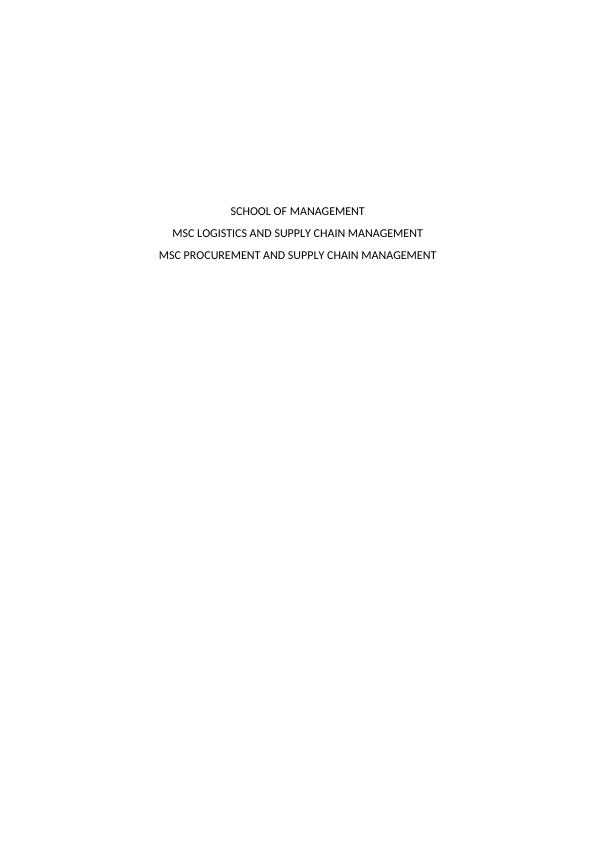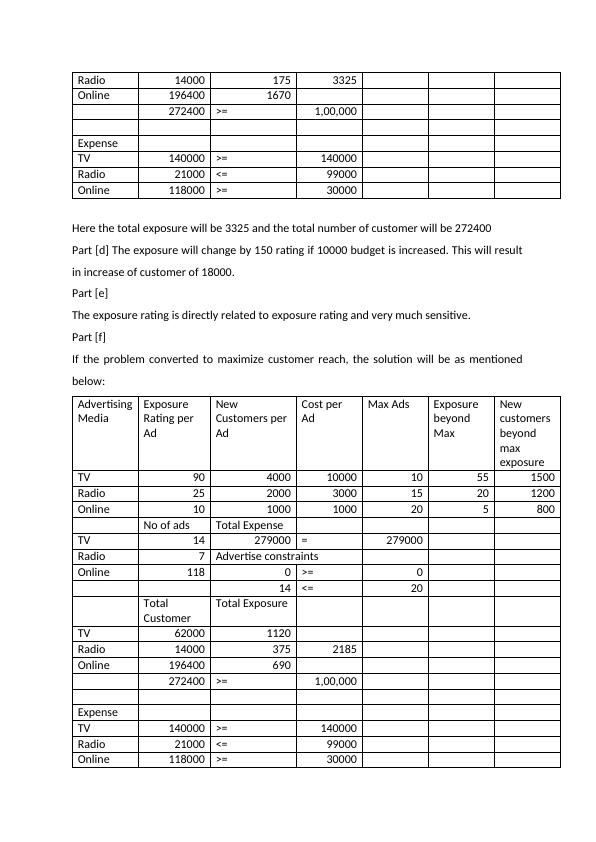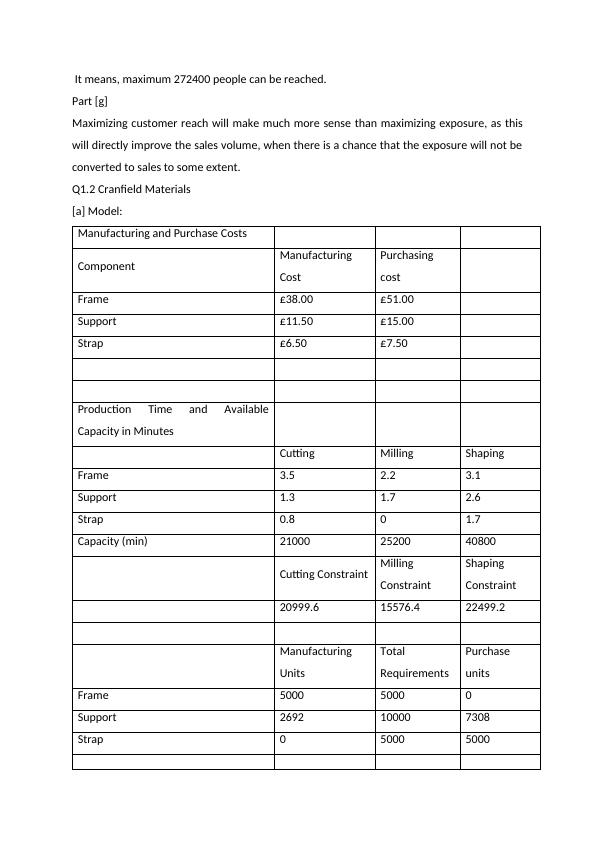Linear Programming Model Building and Decision Trees in Logistics and Supply Chain Management
This assignment involves analyzing four cases related to supply chain management using analytical techniques.
12 Pages2471 Words66 Views
Added on 2023-05-28
About This Document
This article discusses capacity decision making, ordering approaches, and line balancing in logistics and supply chain management. It covers topics such as linear programming model building and decision trees to help optimize business decisions. The article provides examples and models to illustrate these concepts.
Linear Programming Model Building and Decision Trees in Logistics and Supply Chain Management
This assignment involves analyzing four cases related to supply chain management using analytical techniques.
Added on 2023-05-28
ShareRelated Documents
End of preview
Want to access all the pages? Upload your documents or become a member.
Analytical Techniques for Supply Chain Management
|11
|2481
|193




